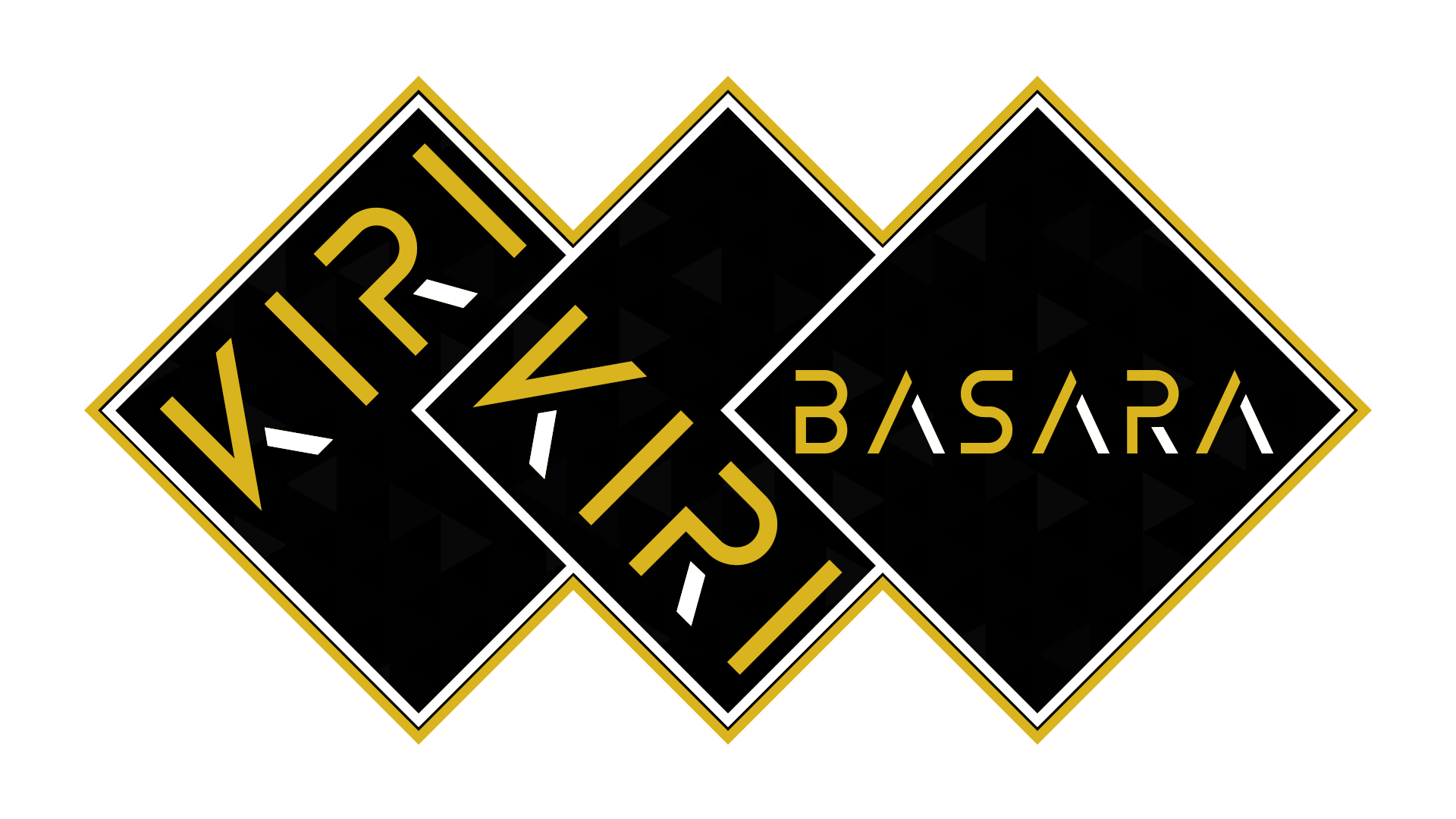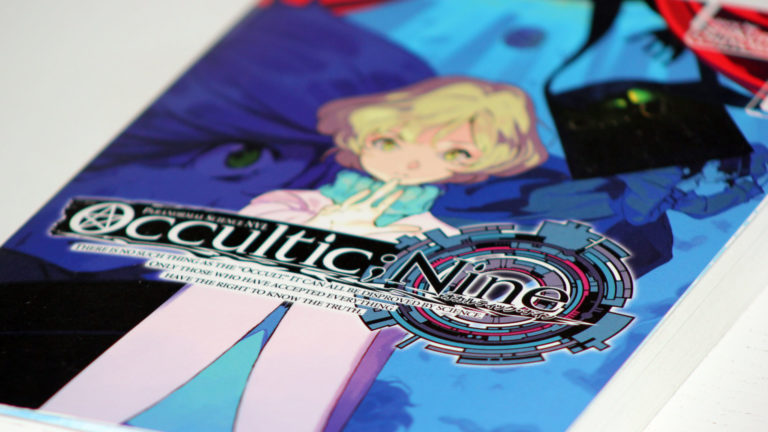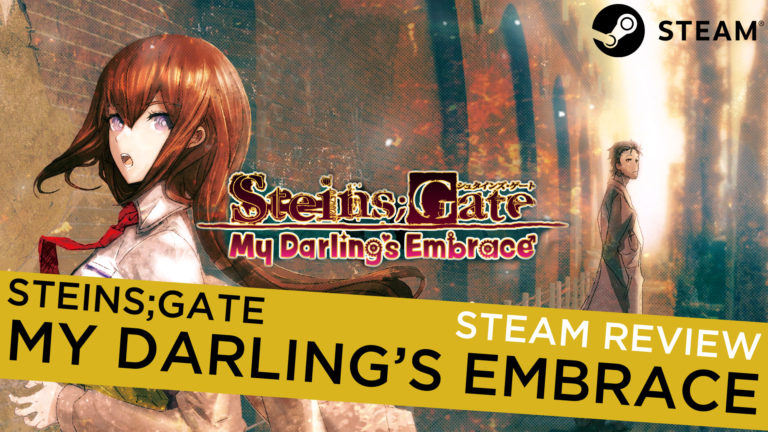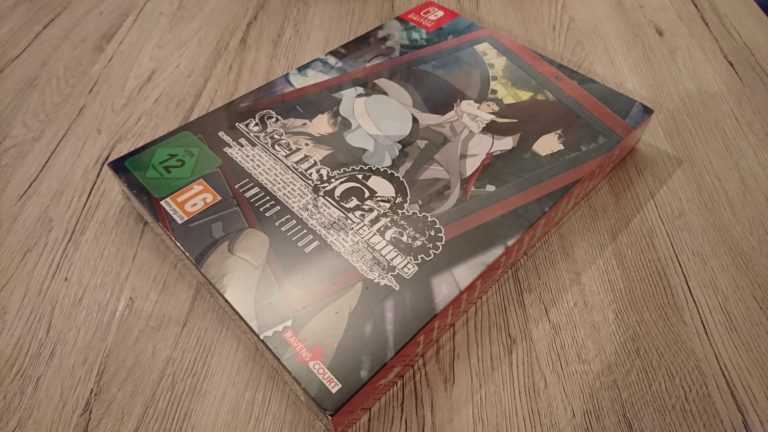Originally released in 2014 in Japan, Robotics;Notes Elite is the third game in the Science Adventure series, and together with its sequel, Robotics;Notes DaSH, it is the latest in the series to receive an English localization thanks to the efforts of Spike Chunsoft, Inc. Both games will be released on October 13, 2020 on Steam worldwide, with an October 13 release date for PlayStation 4 and Nintendo Switch in North America, and an October 16 release date for Europe.
Robotics;Notes Elite was first released in Japan on the PlayStation Vita as an enhanced re-release of the original game. It was later ported to the Nintendo Switch and PlayStation 4 in Japan, with a Steam version also produced for the English release. The main differences between Elite and the original game are the added integration of animated cutscenes from the anime adaptation at key moments, improved character models, and improved story pacing.
Spike Chunsoft, Inc. was kind enough to provide us with review copies for both games, and in this article, we’ll be taking a look at Robotics;Notes Elite on PC and the Nintendo Switch.
In this review, we’ll examine five key elements of Robotics;Notes Elite: its story, its presentation, its gameplay, its localization, and its technical issues. For those of you who have already watched the Robotics;Notes anime, we’ve also included a section explaining whether or not you should play the game if you’ve already watched the anime. At the end of the article, we will provide our scores for the release based on all of the factors that we bring up.
Our playthrough guide for the game can be found here. The game’s route structure is pretty complex, so we highly recommend using it!
Without further ado, let’s get into it!
Story
Robotics;Notes Elite takes place in 2019 on Tanegashima, an island south of Japan’s main islands. The story follows Kaito Yashio, Akiho Senomiya, and the rest of the Robot Research Club at Central Tanegashima High. Their goal is to build a giant robot based on Gunvarrel, an extremely popular in-universe anime. However, their journey is fraught with complications, mysteries, and conspiracies hidden on the island. The club’s friendship and robot-building skills are put to the test as a world-ending plot is unraveled before their eyes.
Before we dig deep into the story, we do want to note that Robotics;Notes Elite references, relies on, and spoils information and plot points from Chaos;Head and Steins;Gate. If you haven’t already, we recommend reading both of those games before jumping into Robotics;Notes Elite and its sequel, Robotics;Notes DaSH.
You can check out our Chaos;Head purchase guide here.
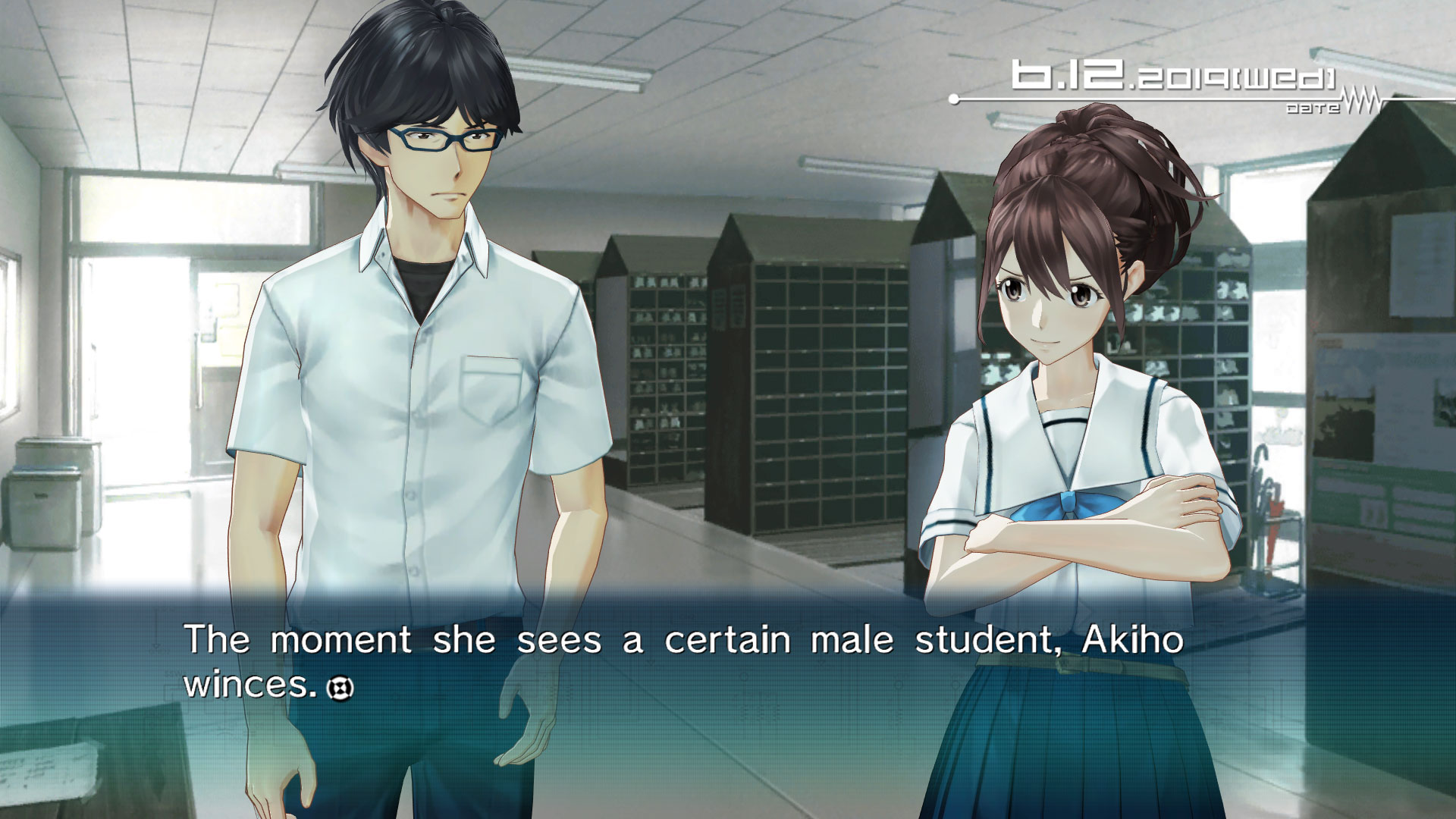
As is the standard in the SciADV series, Robotics;Notes’ story starts slow, but after a few chapters (which are called “Phases” here), the plot quickly picks up, and it becomes a thrilling, high-stakes adventure as the main characters get tangled up with mysteries and conspiracies in true Science Adventure fashion. The cast of characters encountered throughout the game is interesting, unique, and lovable. Every main character has their own backstory and an interesting quirk, and each of them deals with some kind of issue or obstacle that they try to overcome over the course of the main story. The character development in the story is believable and very human—there are many points throughout the story where you can’t help but root for the main characters as they tackle a particularly difficult challenge to their identities, their goals, and their dreams.
The perspective you take in the story is, for the most part, that of Kaito Yashio, a teenager with a penchant for the in-universe online fighting game Kill-Ballad. Throughout the story, there are also occasions where the perspective switches to that of a different character. This helps enhance the experience and explain parts of the story that Kaito wasn’t part of. Overall, it’s certainly a welcome feature.
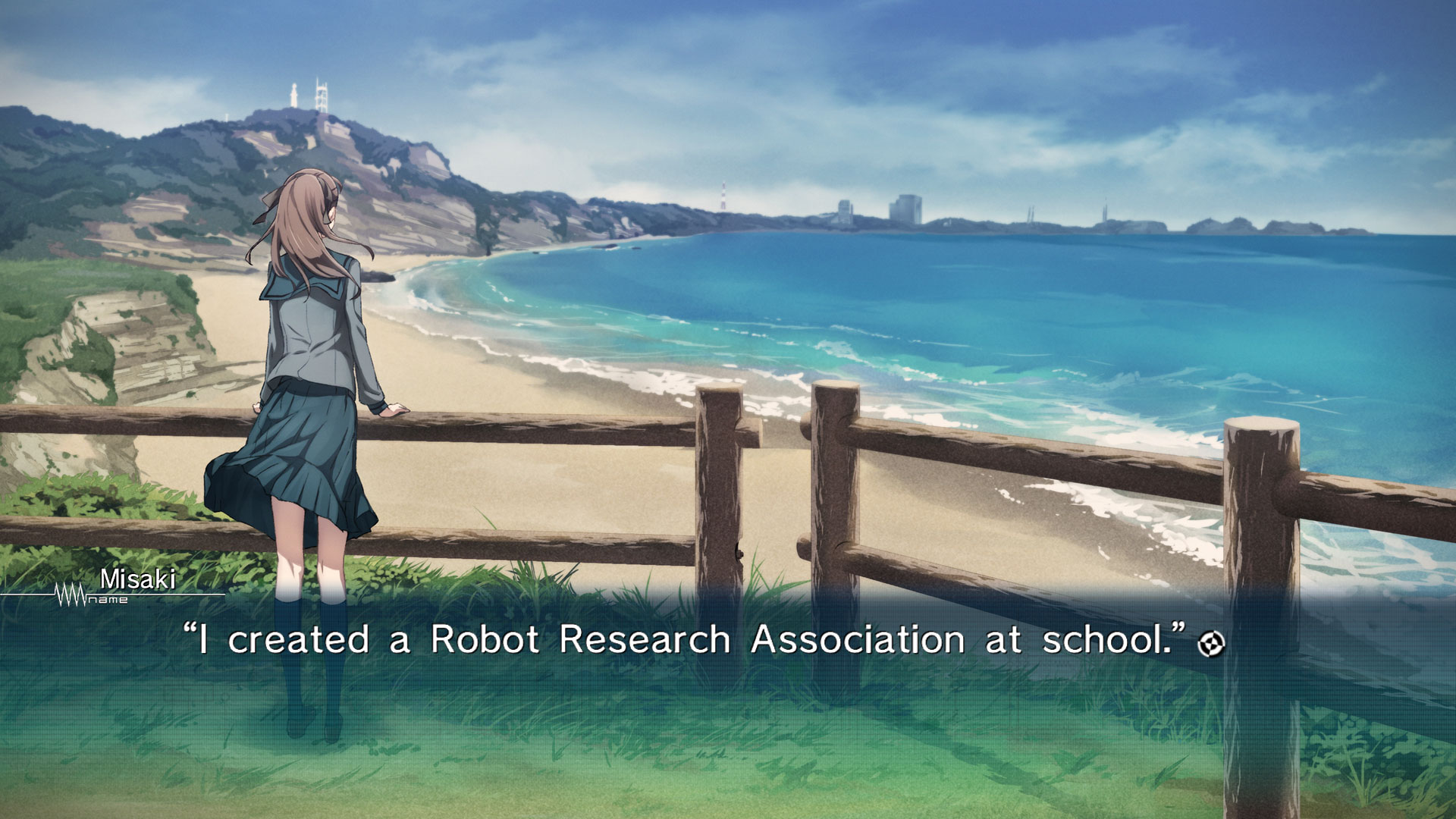
We really enjoyed the story and its characters. Robotics;Notes’ story has a much lighter tone compared to most of the other SciADV titles, which is a nice change of pace. Of course, that’s not to say that it doesn’t have its own share of grim moments—Robotics;Notes is a SciADV game at the core, and balancing the good times with the hard times is what the series does best.
We also really enjoyed the different themes that Robotics;Notes explores. One of these is the idea of following your dreams no matter what difficulties they might bring about. The theme of friendship is also a big one—the narrative often plays with the idea of how far one should go for their friends. Because these issues are ones that we all frequently deal with in our daily lives, seeing them play out in Robotics;Notes made the story and characters feel more relatable and grounded in reality when compared to the other SciADV titles.
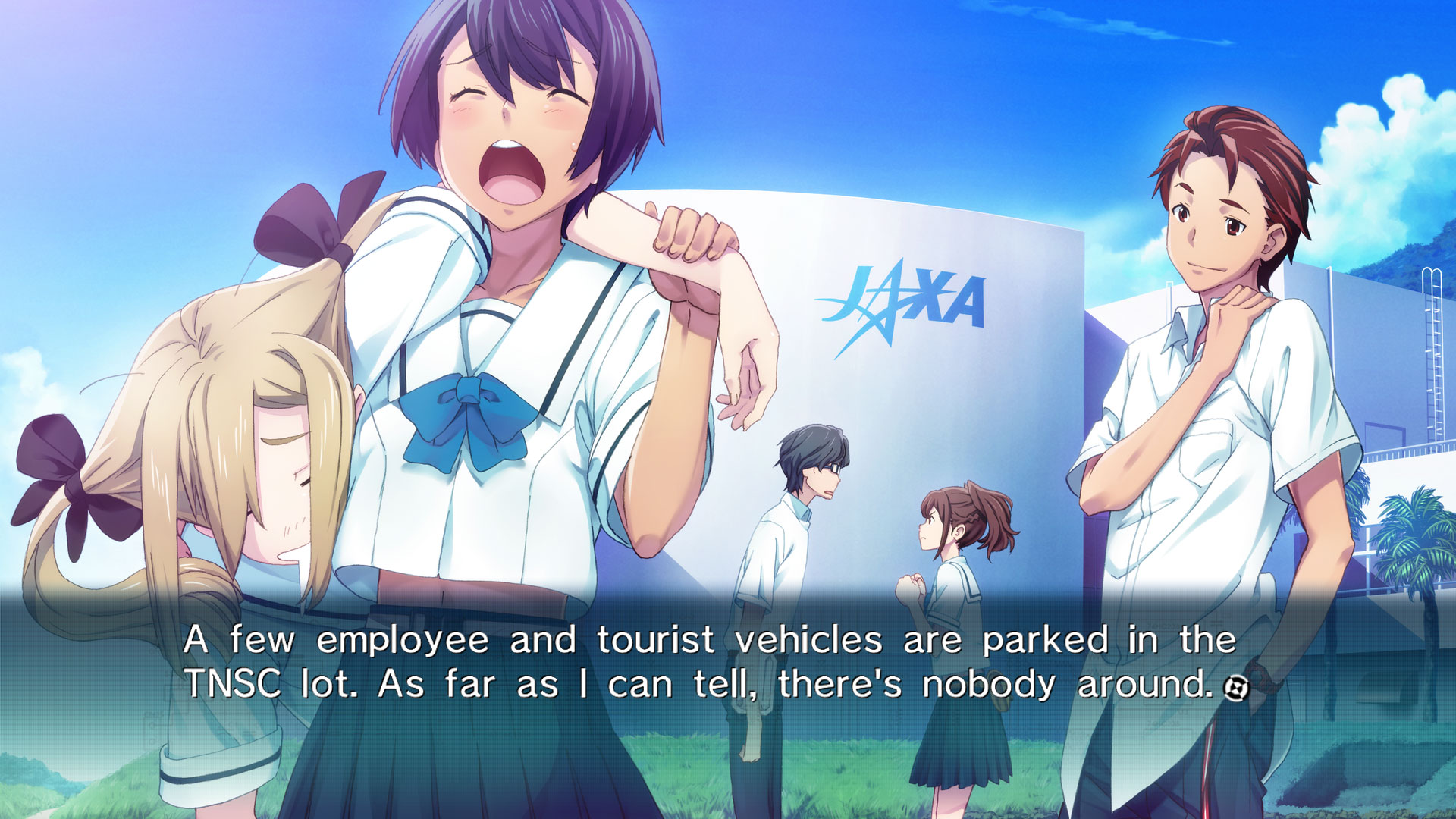
As is the norm in SciADV, the location of the narrative plays a major role. As mentioned previously, the game is set on Tanegashima, a Japanese island. This is a welcome change of pace from the busy districts of Akihabara and Shibuya. Tanegashima is mostly famous for its space center and rocket launch site, which belongs to the real-life Japanese space agency, JAXA. Tanegashima is definitely the most interesting and beautiful location presented in SciADV so far, and the game makes you want to visit the island for yourself and see the sights.
The game also explores other sights all over the island that are not that well-known. Kaito visits a variety of interesting places on the island that also exist in real life. The game’s producer, Tatsuya Matsubara, mentioned in an interview with us that they made three trips to the island during the game development to ensure that the island depicted in the game felt as accurate to real life as possible. It seems that their efforts paid off, because Tanegashima is arguably one of the most unique and detailed real-life locations depicted in a visual novel.
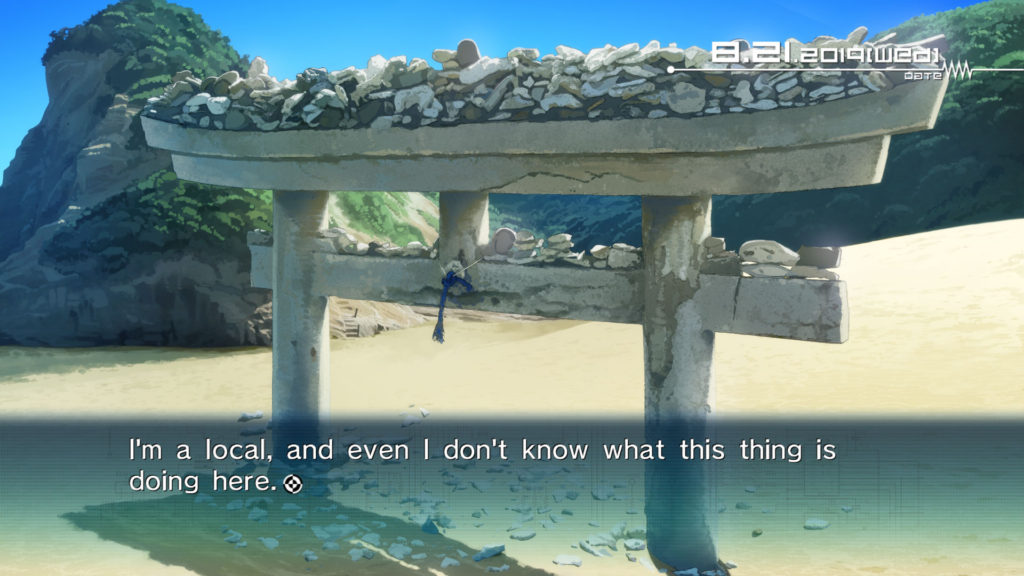
PRESENTATION
The first striking difference in presentation when compared to other SciADV titles is that Robotics;Notes uses 3D models for its characters rather than 2D sprites. While this may sound off-putting at first, the 3D models work surprisingly well, and we quickly grew to like them. All of the characters are well-animated and voiced, and they have a wide variety of movements and emotions that they can show. It makes the characters feel more real, as if they are moving in real time while they interact with one another.
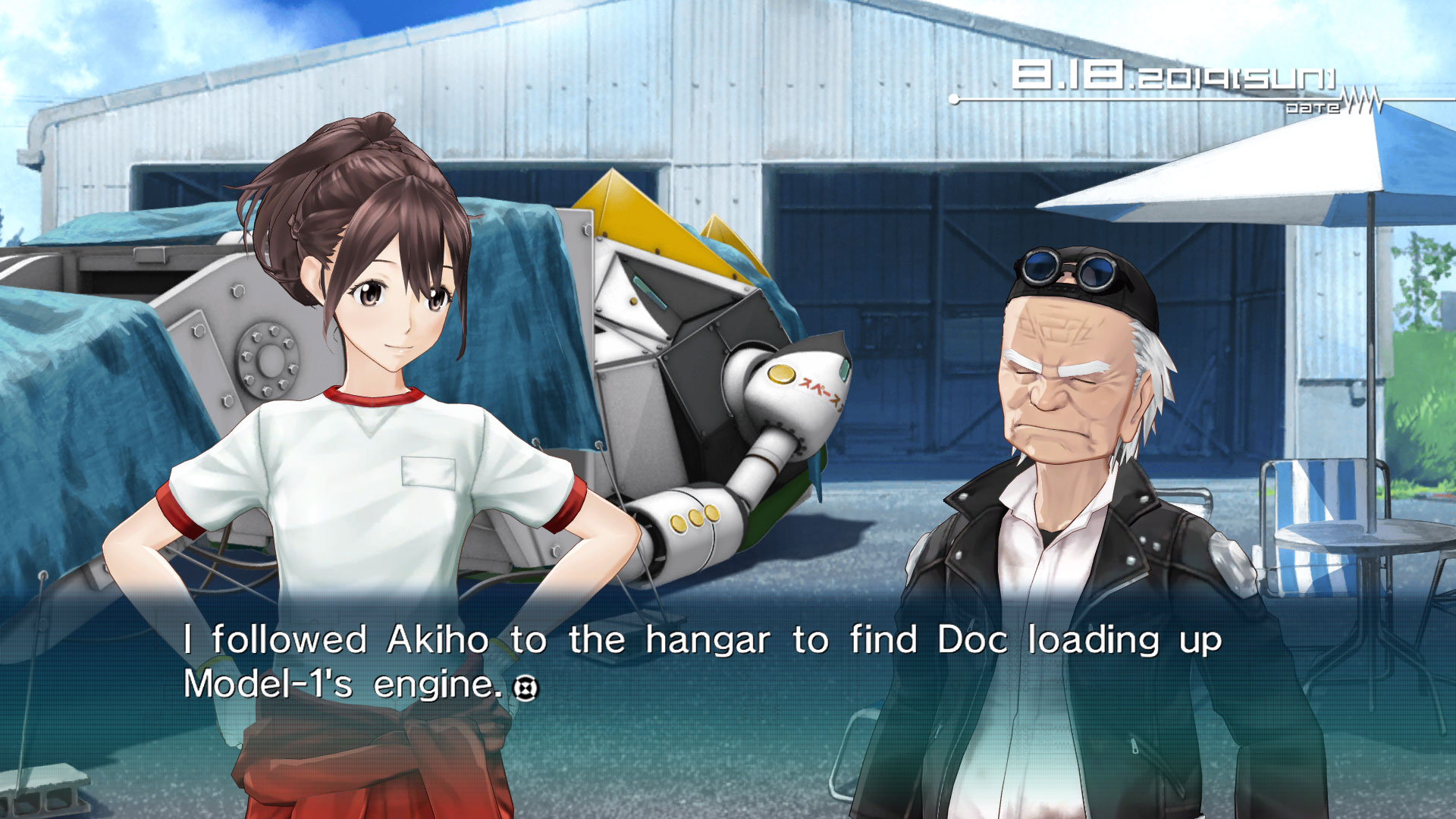
However, there are also a few issues that resulted from the choice to use 3D character models in the game. For example, there are a few scenes where the main characters talk to minor characters that don’t have 3D models. While it’s understandable that creating a 3D character model for a minor character would be too costly and time consuming, it just looks weird when you see the main character talking to what is seemingly thin air.
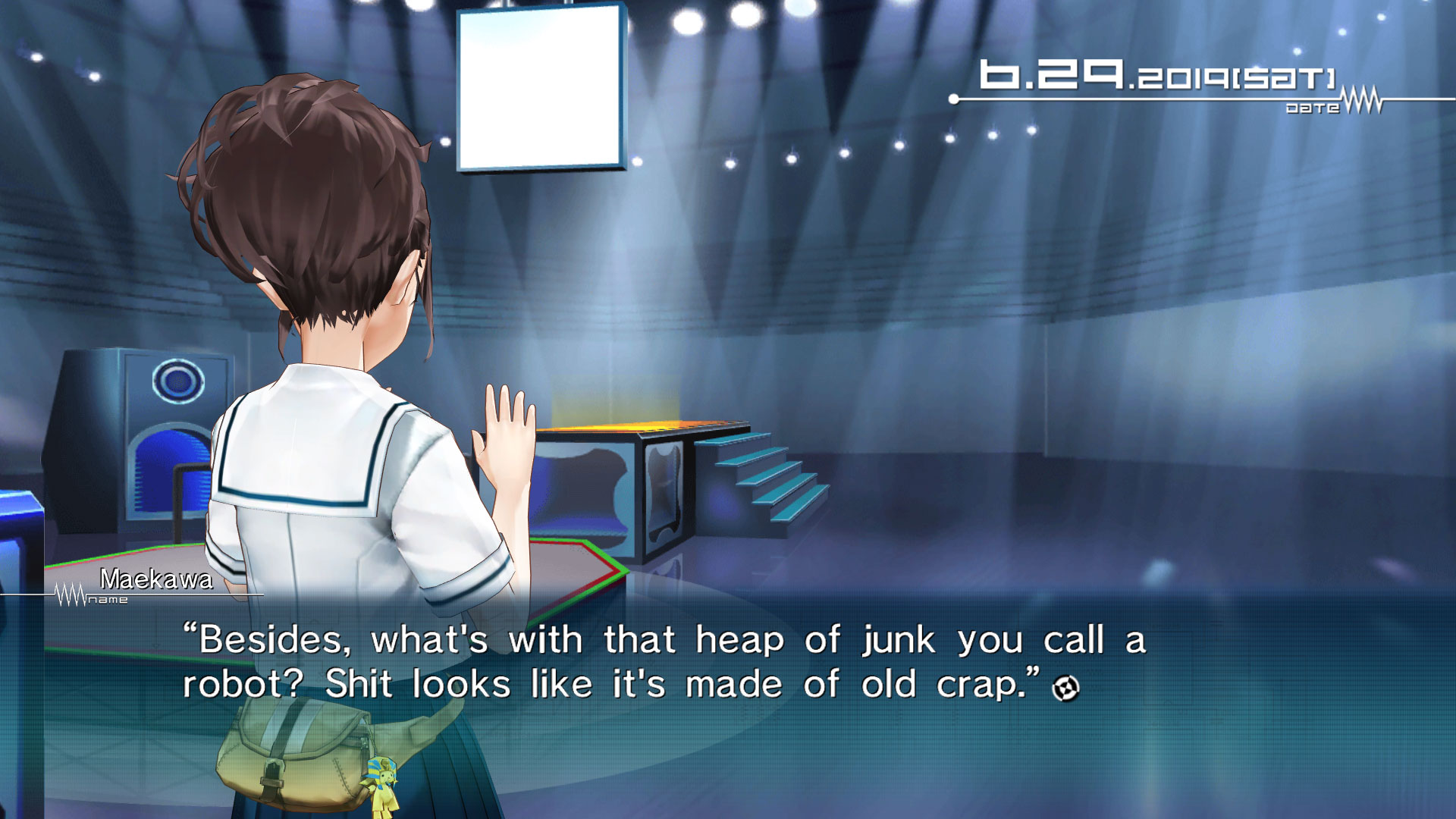
All of the game’s CGs look really nice—they’re very detailed, and they fit the overall style of the game perfectly. The backgrounds are also quite detailed, though some of them seem to be in a lower resolution. This might be because the game seems to be a port of the original PS Vita version of the game, which ran at half the resolution of a standard 1080p monitors While the backgrounds have this issue, both CGs and the 3D models look stellar on PC.
This lower resolution issue is not present on the Nintendo Switch, as its screen is much smaller than the typical PC monitor. However, in the Switch version, there is an issue with the 3D models’ anti-aliasing, which makes the edges of character models look blocky.
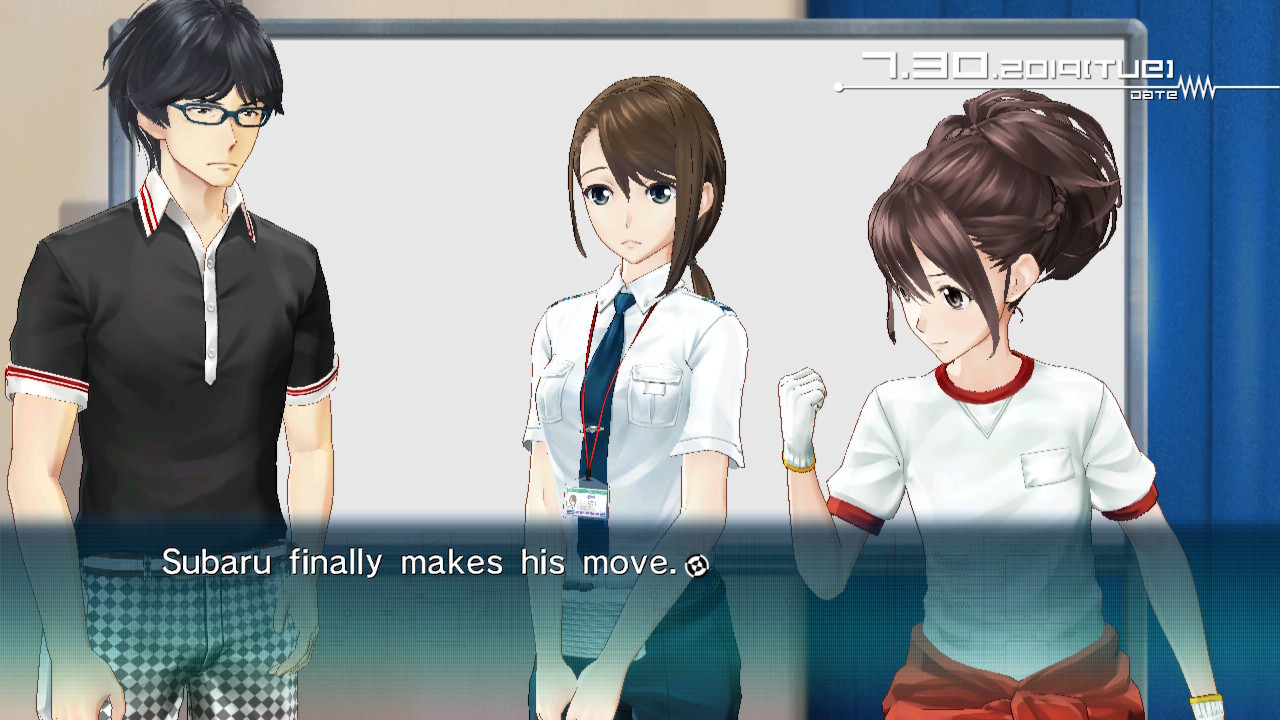
Gameplay
Robotics;Notes might seem to have standard visual novel gameplay at first, but there are plenty of additional gameplay elements to be had when compared to the rest of the SciADV series. While you read, you can open Kaito’s PhoneDroid tablet device during most segments and use several of its apps. It’s somewhat similar to Rintaro’s phone in Steins;Gate in this sense, but there is much more that the player can do on Kaito’s PhoneDroid.
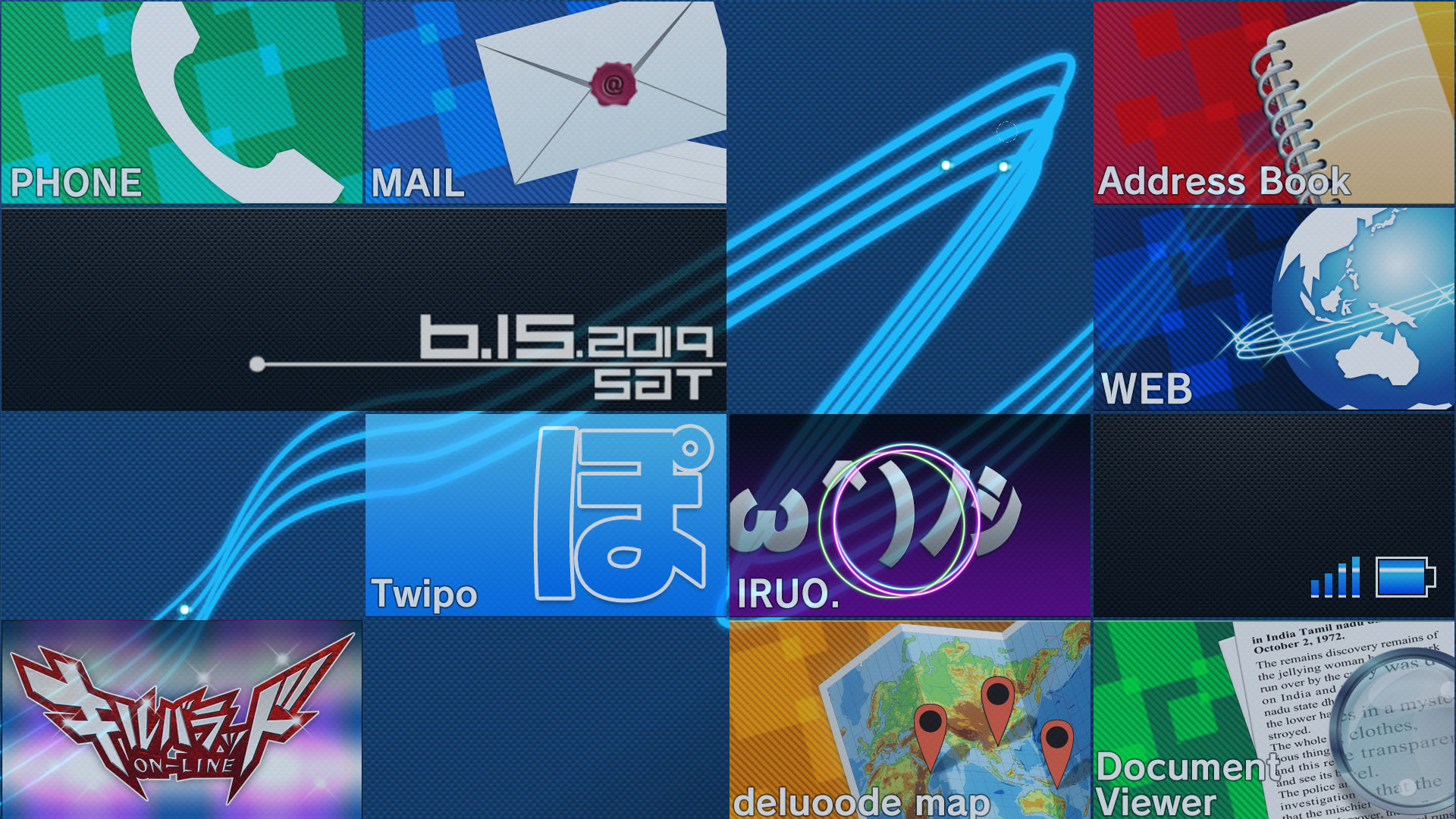
The “Phone,” “Mail,” “Address Book,” “Web,” and “Kill-Ballad” apps are started up automatically when the story requires their usage. However, there are other apps that players can use on their own time. “Twipo,” the in-universe version of Twitter, is a social media app wherein you can read “tweeps” from the game’s other characters. It’s also the main method by which the player can affect the route they’re on.
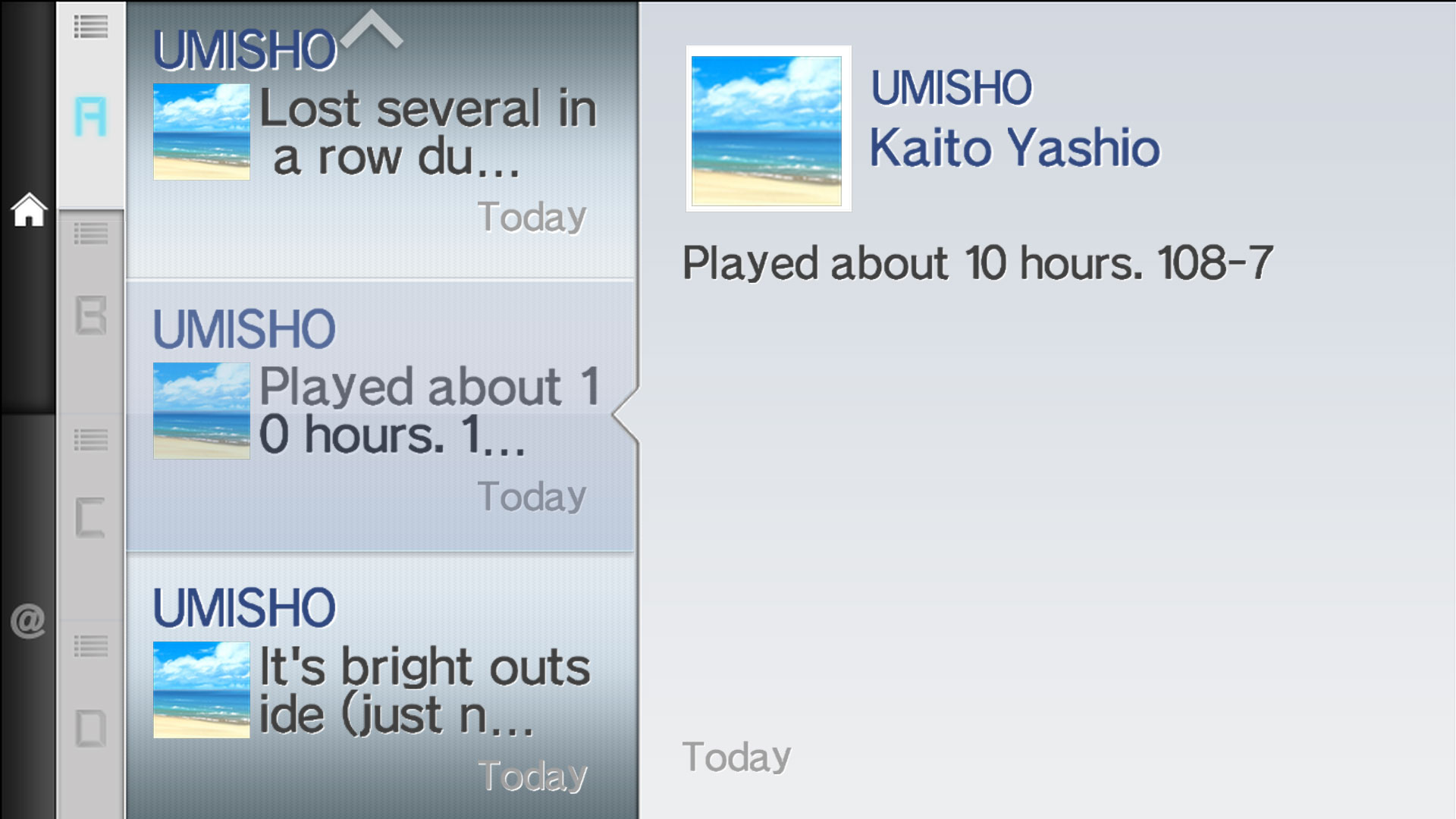
IRUO. is an app used to scan various locations, characters, and objects to learn more about them. There are also several occasions in the story where you need to find a certain icon in the scenery to scan using the app. You can scan all of the backgrounds and characters in the story, but there are a few instances where you can’t use IRUO. to do so, such as when there is a CG on the screen, or when Kaito is occupied with another task.
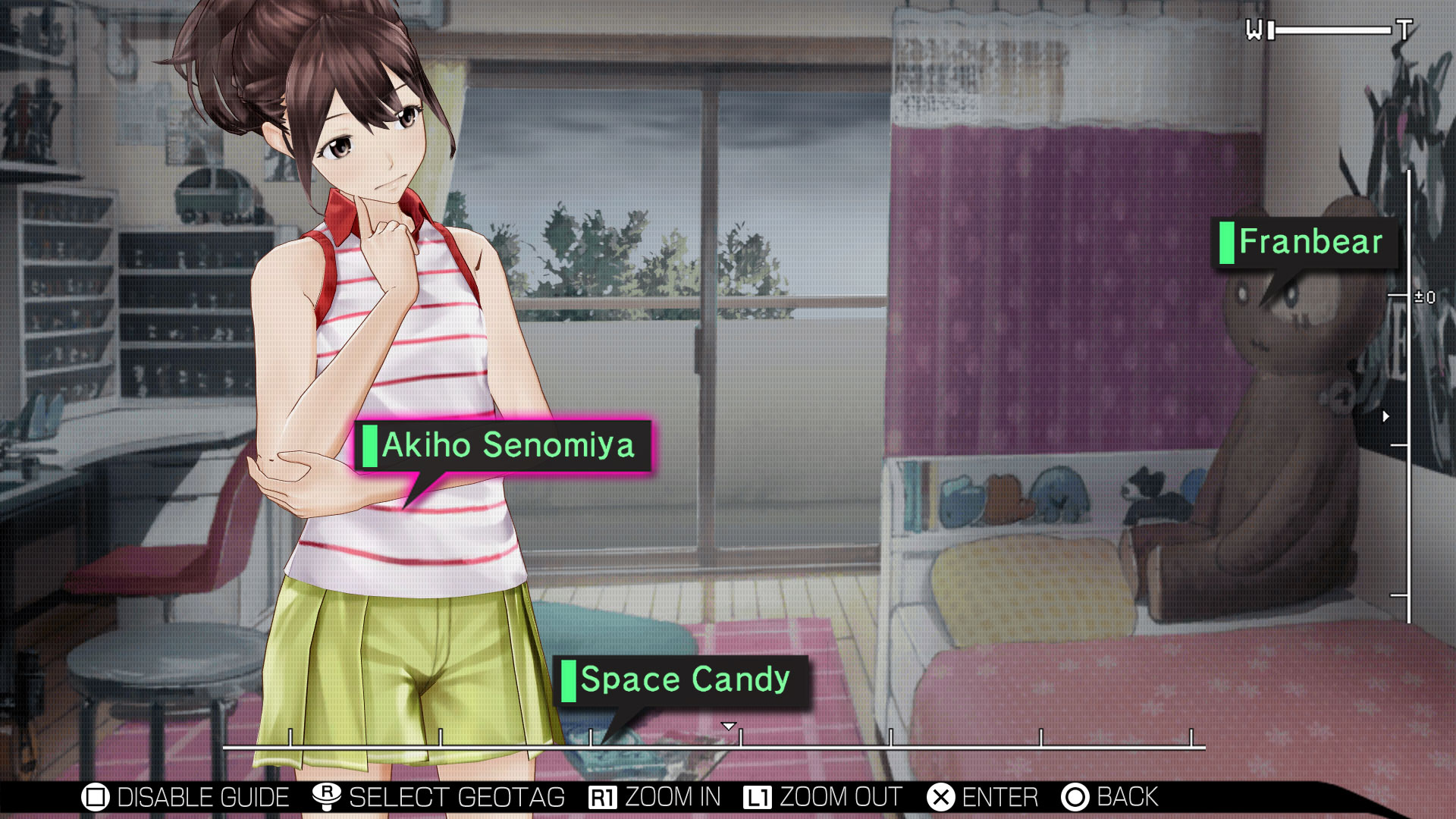
The “Deluoode Map” app can show you your current location on the island, and you can occasionally use it to select a location to travel to. There’s a map of the whole island in the app, with important locations and roads marked.
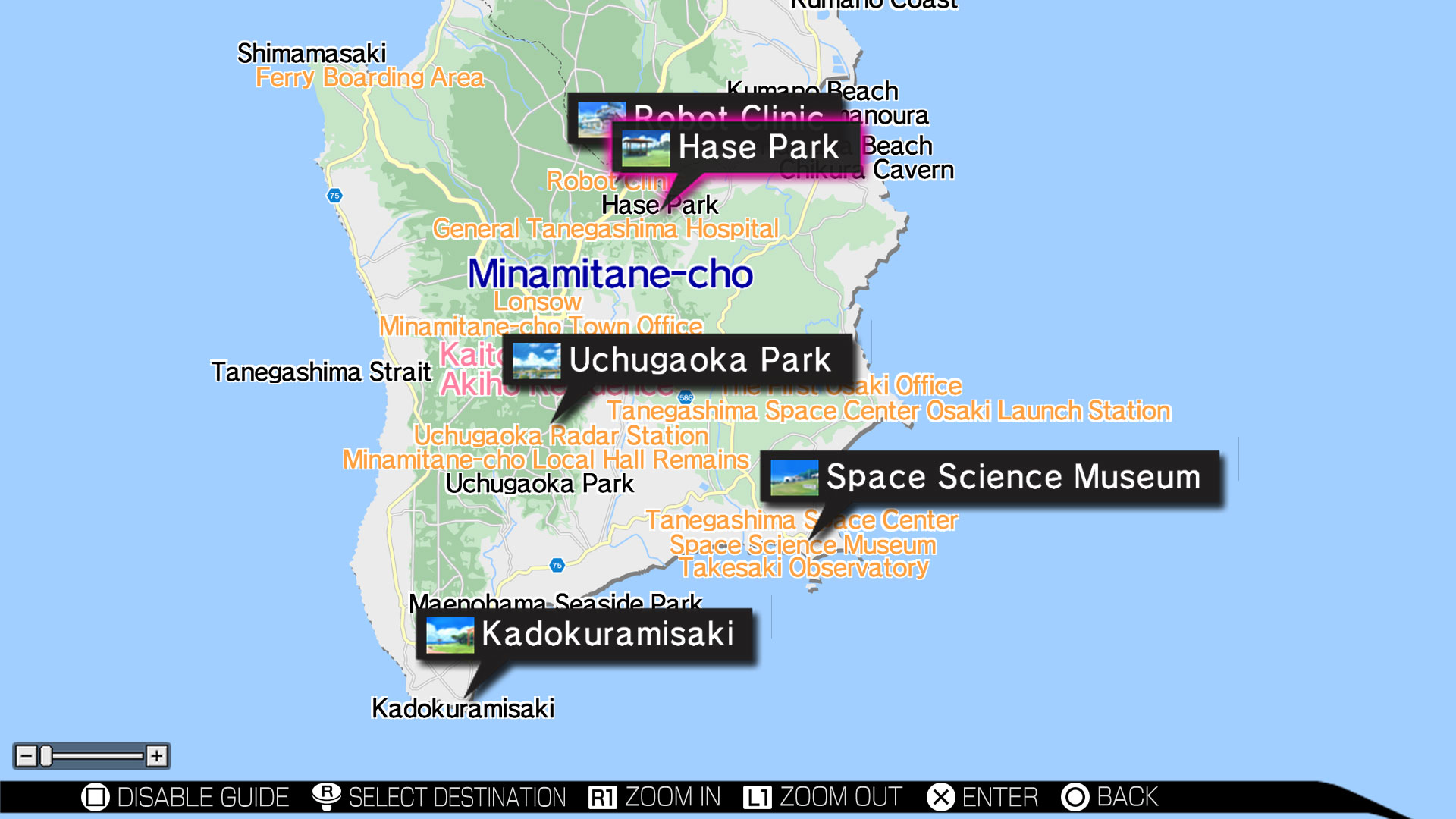
The “Document Viewer” app is inaccessible at first, but it’s unlocked as you progress in the story. You can use it to view various documents that you scan later in the story.
The “Kill-Ballad” app is an online fighting game that Kaito plays in his free time, and you get to play the game yourself at some moments in the story. Its gameplay is essentially a quick-time event for the player—you need to press buttons on your keyboard or controller in succession according to what’s displayed on the screen. There’s a set amount of time that you need to do this in, but there’s usually plenty of time to do all of the button presses correctly. Winning or losing in Kill-Ballad can also sometimes affect the story.
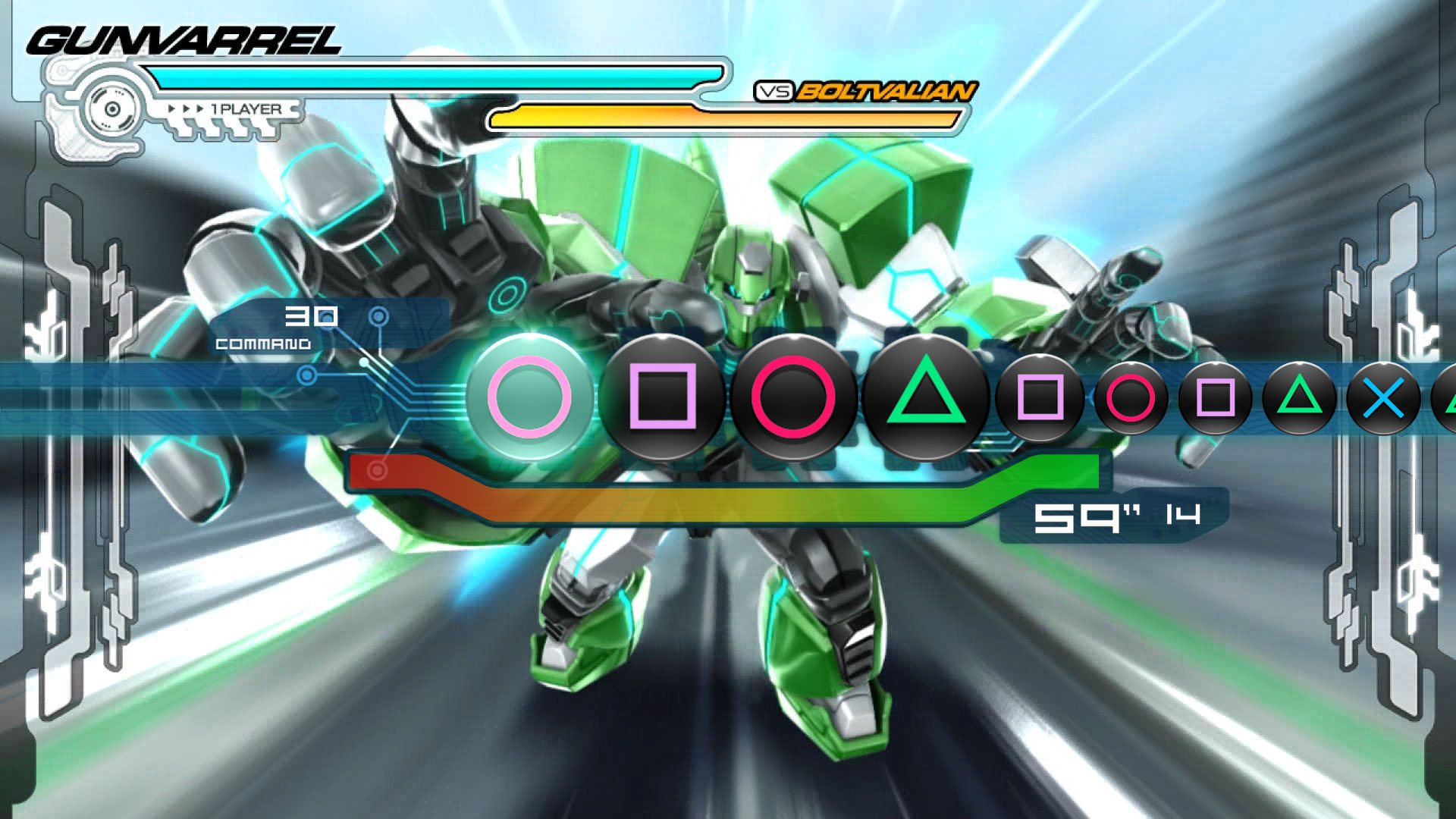
All of these gameplay mechanics are certainly welcome, and they make the gameplay stand out from other visual novels. Being able to occasionally select a location to travel to and explore, being able to fight other characters in a Kill-Ballad game, and being able to scan various locations, characters, and objects was quite enjoyable. These features definitely spiced up the gameplay quite a bit, making for an entertaining playthrough. We would definitely like to see more gameplay elements like these in future visual novels.
However, as nice as these gameplay elements are, we can’t help but feel that they were rather underutilised overall. Responding to tweeps on Twipo is the only way to affect the story; all other gameplay segments have scripted outcomes, with only one exception. These features feel as if they are gameplay for the sake of gameplay, and do not give any significant control or choice to the player. Although there is nothing wrong with extraneous features to enhance the experience, it would have been nice if they could have had more of an impact on the storyline or the branching of the VN’s routes.
Speaking of the VN’s routes, this in itself is the game’s greatest shortcoming (in terms of intentional game design, localization and technical issues aside). The VN’s branching system is very poorly implemented—the story is completely linear, and outside of the very basic “common” ending, all other endings are canon, and they happen in a chronological order. They are more akin to normal, individual phases than endings in that regard. However, despite occurring in a linear path, it is possible to play them out of chronological order by not responding to Twipo tweeps correctly. In other words, messing up these Twipo responses may make your experience a whole lot more confusing. And messing up is quite easy—there is nearly zero indication on how responding to certain tweeps will affect the route you end up on. Without the use of a guide, it’s likely that most players will end up playing the game in the wrong order.
Localization
The game’s localization is unfortunately a bit of a mixed bag. On one hand, the game was extremely well edited, which makes the script flow nicely in English and made the game a joy to read overall. Most of the narration and dialogue is adapted well from the Japanese text—many phrases were localized to keep the conversations witty, but this was also done within reason. Honorifics were kept in and Tanegashima lingo remains, which was definitely a pleasant surprise compared to previous SciADV localizations. Most of the references were also localized adequately. Furthermore, all of the game’s important CGs are translated, as well as most of the text outside of the main story script.
However, that’s just about where the merits of the translation stop. While the liberal approach to the game’s editing does add a professional feel to the text, it also tramples on the characterization of Kaito and other characters very often. In contrast to the Japanese writing, Kaito often comes off as being a lot more aggressive in his internal thoughts than he should be—he was really meant to be portrayed as a bit more apathetic and timid. This also happens quite a bit with Junna’s writing: there are many instances where she will use phrases in the translation that don’t fit her character, and indeed, if you compare these instances to the Japanese text, there’s a disconnect between the original text and the translation. The characterization isn’t bad for all of the characters, though. For example, it’s done exceptionally well in Mitchie’s case.
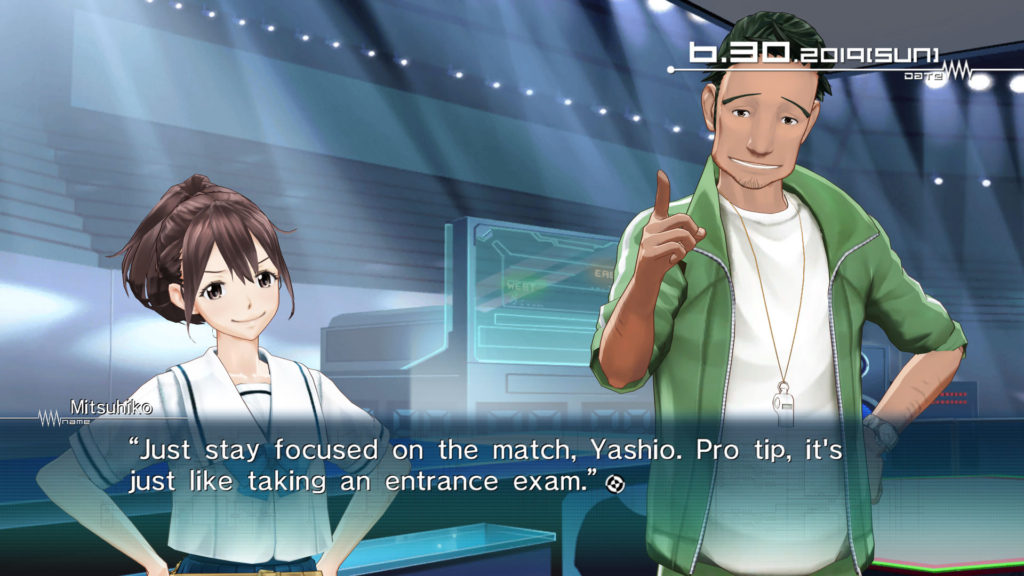
The editing itself is consistent, but how much it tramples on original intent varies. This variation throughout the game can probably be attributed to the scripts having seemingly been distributed amongst numerous translators. While it’s understandable that this may have been necessary to meet a deadline, it leads to the game’s overall text being inconsistent in quality and accuracy to the original. Certain Phases in the game have narration that cuts out a lot of details for seemingly no reason, while others are almost perfectly translated. Certain characters were misinterpreted to varying degrees, while other characters were translated flawlessly. These inconsistencies are rather disappointing to see, because it shows that the localization was very close to being stellar but fell short instead.
These inconsistencies also extend to terminology used in the story. It’s clear to see that the team did take some previous officially-translated material into account when it came to translating terminology, but it’s also clear that other material was not given the same treatment. While most Gundam references in the script were translated well, others were not. For instance, “Frau Bow,” a reference to “Fraw Bow,” was rendered as “Frau-bo” in the official translation. Other terminology that’s very clearly explained in official Japanese Robotics;Notes guide materials are also not carried over correctly. For example, the term “Ka-Trooper” is rendered as “Cartrooper,” which is not correct—one of the official Robotics;Notes information books explicitly states that the former is correct, not the latter.
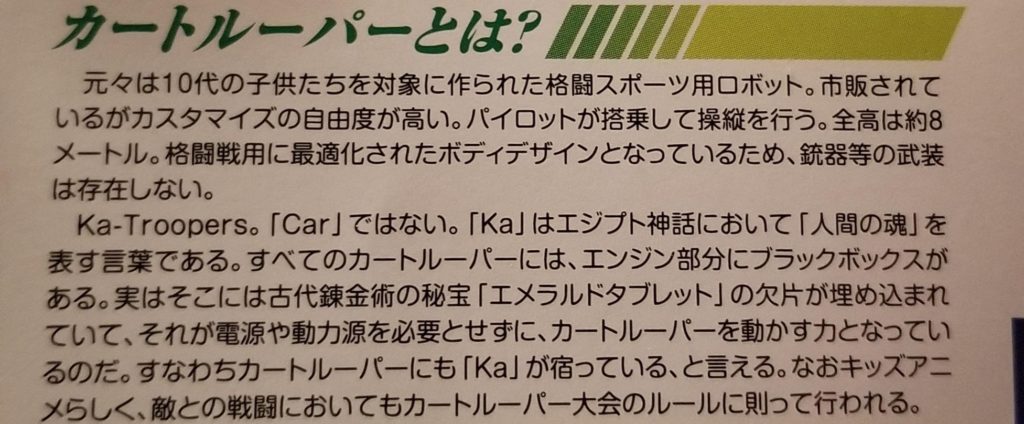
One of the more major examples of terminology inconsistency is the usage of “Geji-ne” in the game as one of the character’s names. The most pressing issue here is that, well, the name isn’t translated. How is an English reader supposed to know what “Geji-ne” means? For context, “Geji-nee” (note that the official translation removes an “e” from the honorific, likely so readers don’t pronounce it as “knee”) translates to “Sister Centipede”—and notably, this specific translation of the name does come up in the official localizations of Steins;Gate and Steins;Gate Elite.
The question is, how did this inconsistency come up? This isn’t an isolated issue: for example, the last name of an important recurring character (which comes up in Chaos;Child), or the way a recurring, iconic phrase in the series is worded (which also comes up in Chaos;Child)—in Robotics;Notes Elite, both of these are rendered inconsistently with how they were rendered in previous official localizations. Ultimately, these inconsistencies make it much harder for an uninformed reader to make important connections between the different SciADV titles.
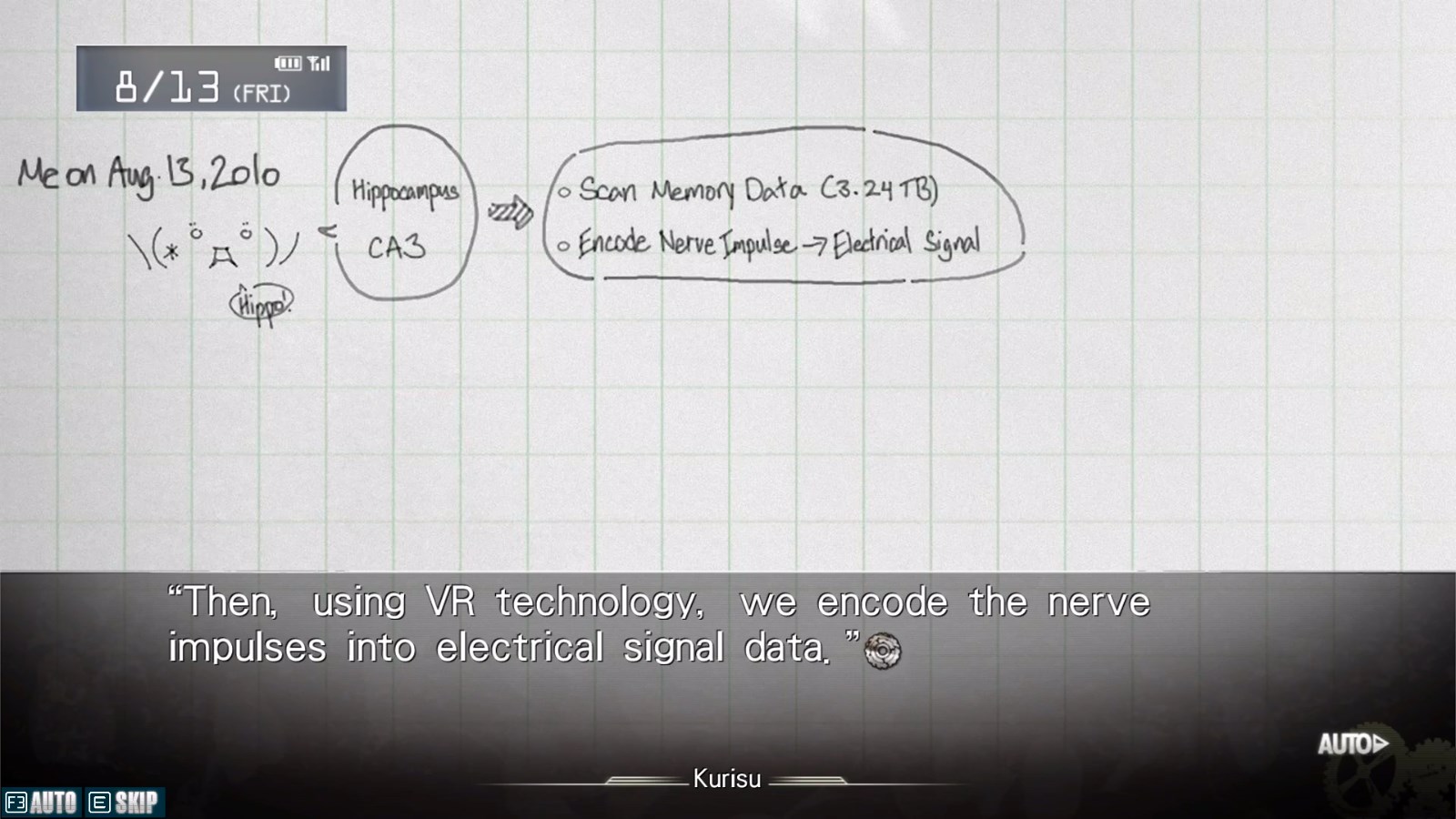
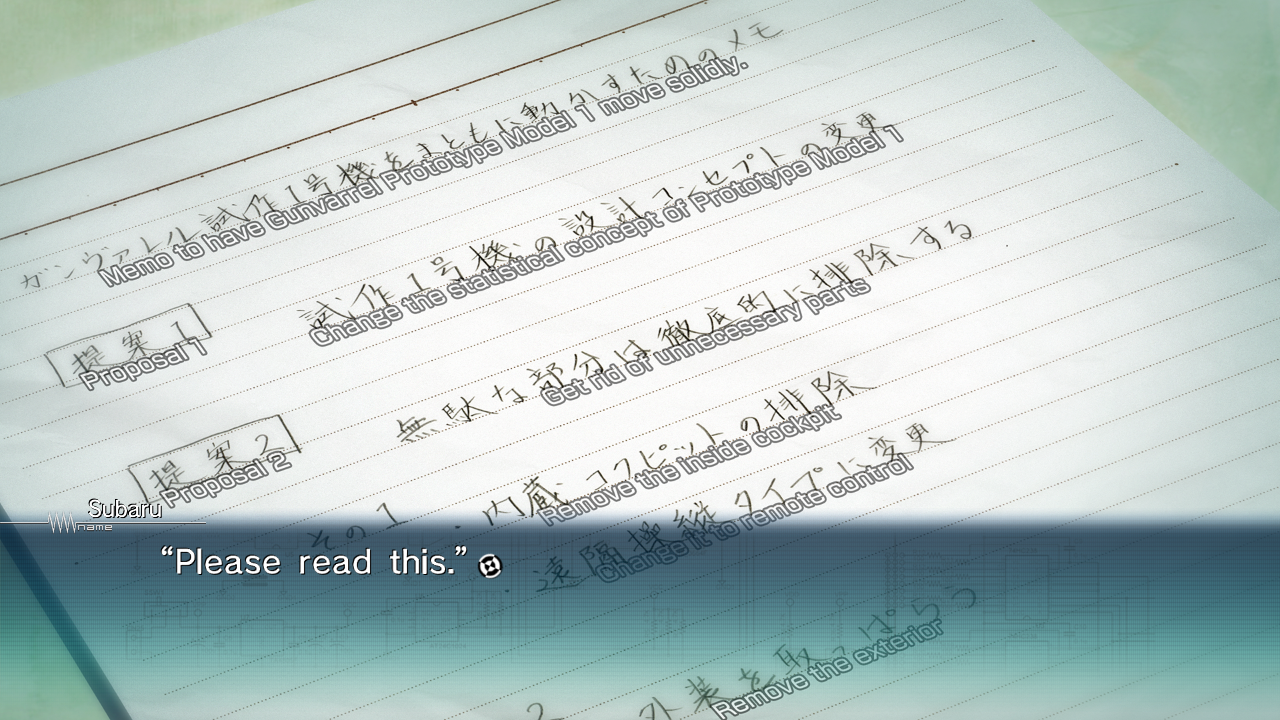
There are issues with the translations outside of the main script, too. In many of the CGs with Japanese text, the text is translated in a way that’s a bit lazy—it’s often overlaid with English text that visually resembles anime subtitles. The ideal approach would have involved the English text getting properly drawn into the CGs in place of the Japanese text, as was the standard in previous official localizations such as Steins;Gate and Chaos;Child. It’s nice that they’re translated at all, but it would be nicer if a bit more work had been put into it.
It also feels as though for the most part, the Twipo tweeps throughout the game simply did not get the editing pass that the rest of the script did—a great number of the tweeps read awkwardly and/or contain typos and mistranslations.
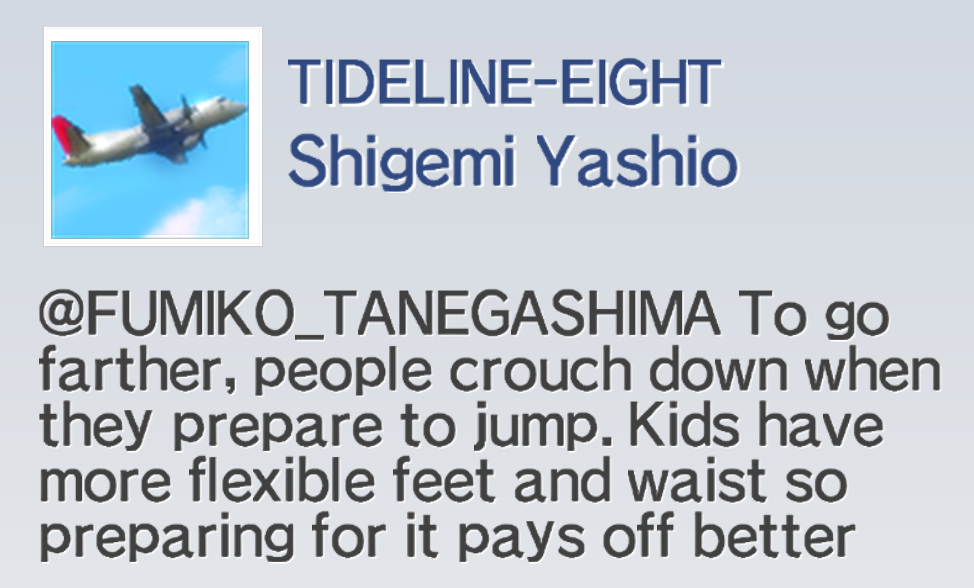
Finally, it is worth noting that while the mecha aspects of the game were adequately translated, the fighting game talk leaves a lot to be desired. The translation seems to have taken a literal approach to the fighting game terminology, as opposed to localizing it into appropriate English fighting game community terms. At the end of the day, though, this is easily the least of the translation’s problems.
Overall, it is a shame to see that though the translation was well on its way to greatness, it unfortunately cannot fully deliver an accurate experience to English readers. While most players will not notice many of these issues due to how well edited the game is, we would still advise that you look out for a fan patch if you buy the game on PC.
Technical Issues
Sadly, there are a few technical issues that we encountered in the game. The major issue on PC is the complete lack of mouse support. While it might not sound like a big deal at first, not being able to use the mouse makes navigating the game menus difficult, and after some time, it became really frustrating. The game uses the F keys (F1, F2, F3, etc.) to open the menus, so if you don’t have a controller, you have to learn those shortcuts to properly navigate the game. There are other unconventional keybinds, too: for example, to open additional media in an IRUO. GeoTag, you need to press the “Insert” key. (Granted, the button you need to press is not specified in any version of the game, but it’s particularly bad in the PC version given that “Insert” is such an obscure key.)
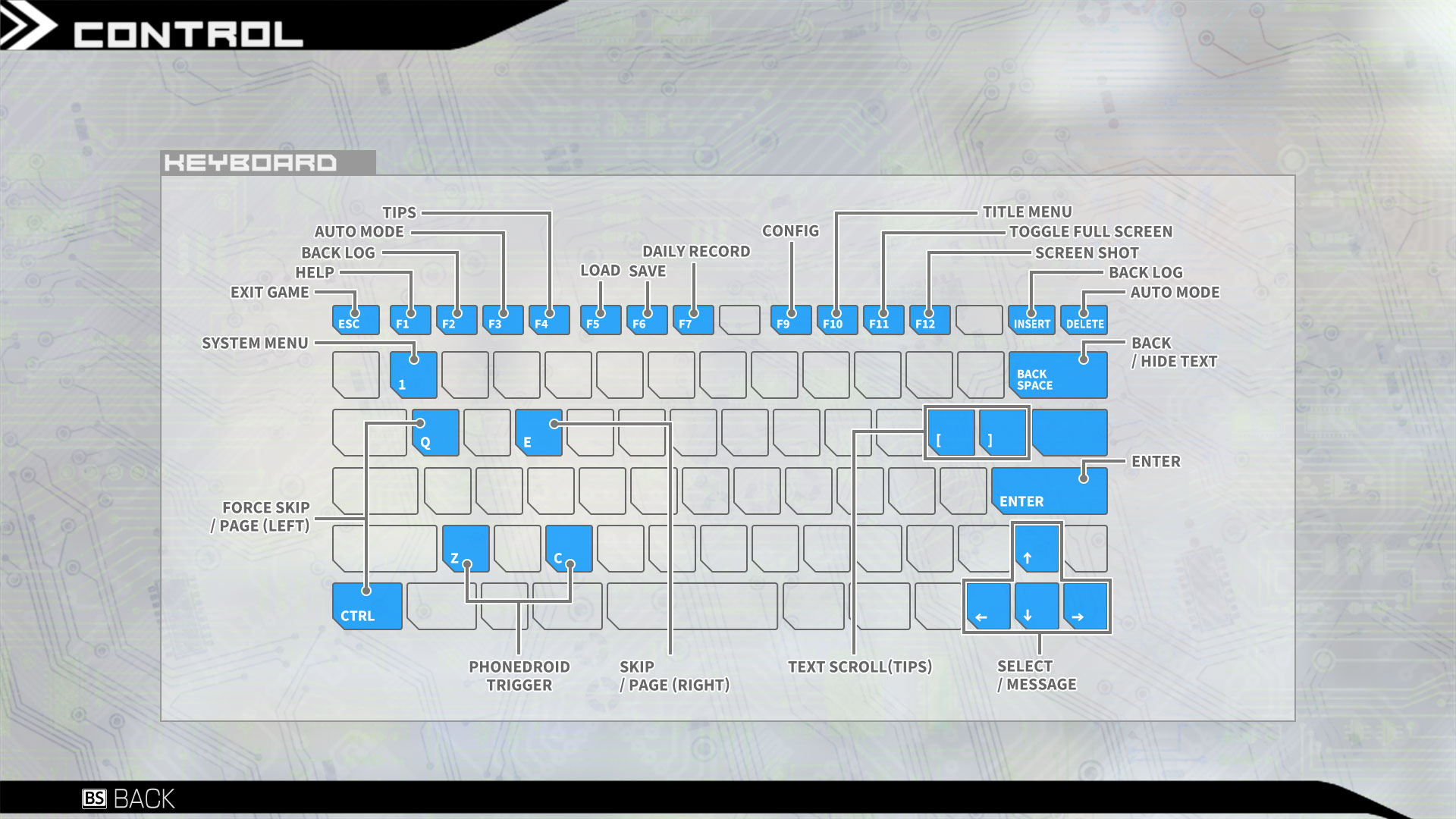
Thankfully, you can use a controller to get around the inconvenience of playing keyboard-only. We used DualShock 4 controllers, which improved the game experience dramatically. You can connect other controllers as well, but they must be controllers that Steam can recognize.
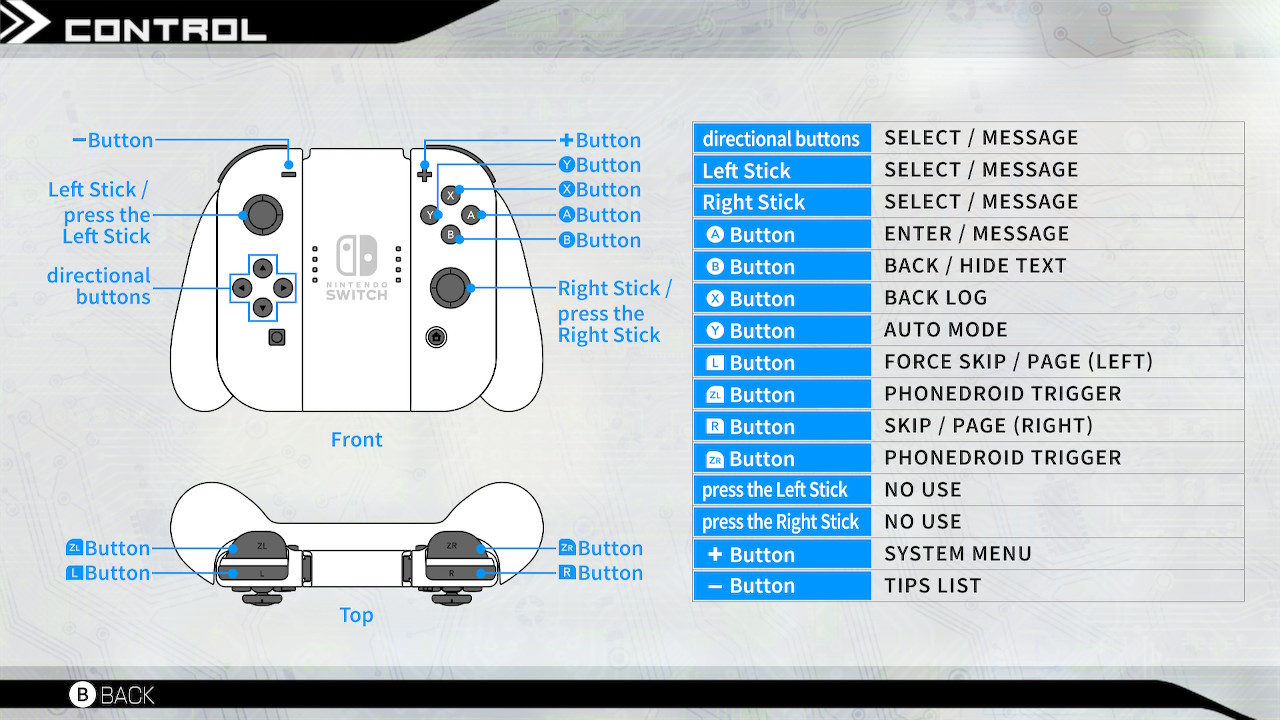
Another technical issue—and this one applies to all releases of the game—has to do with TIPs, the helpful glossary definitions that appear throughout the game. Normally, a TIP unlocks as soon as the term it defines appears in-game, and the term is highlighted in red to indicate the existence of a TIP for it. However, sometimes the red highlight is missing and the TIP is not unlocked immediately, instead being unlocked at the end of the scene. As a result, the information contained within the TIP is not provided when it is needed. It’s a common occurrence when reading to come across an unfamiliar term, not unlock any TIP for it, look it up online, and finish the scene only to find that there was, in fact, a TIP for it after all.
Here’s an issue that appears to be exclusive to the Nintendo Switch version of the game, both in English and Japanese. The “Sync Voice” option in the config, when set to “On,” is meant to sync the text-scrolling speed of dialogue to match the length of the voice line. When this feature is set to “Off,” the text scrolls at the same speed regardless of the length of the voice line. On the Nintendo Switch version, however, this feature does not work at all. The game behaves as if the “Sync Voice” option is set to “Off,” even if it is set to “On.” This isn’t the fault of the localization, but it is a technical issue with the game that has still yet to be fixed.
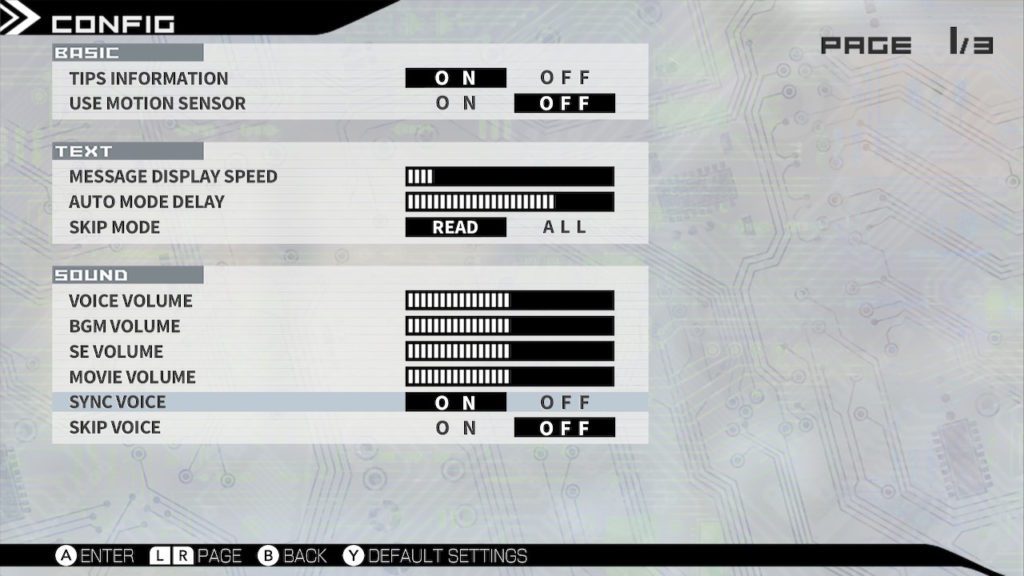
There are also a few technical issues which are present in all HD versions of Robotics;Notes Elite, English and Japanese, introduced during the process of porting the game from PS Vita to other consoles. For example, certain animations cause parts of the character model to clip through each other, such as Aki’s leg clipping through her skirt at times (though granted, this example can only be seen using the IRUO. app).
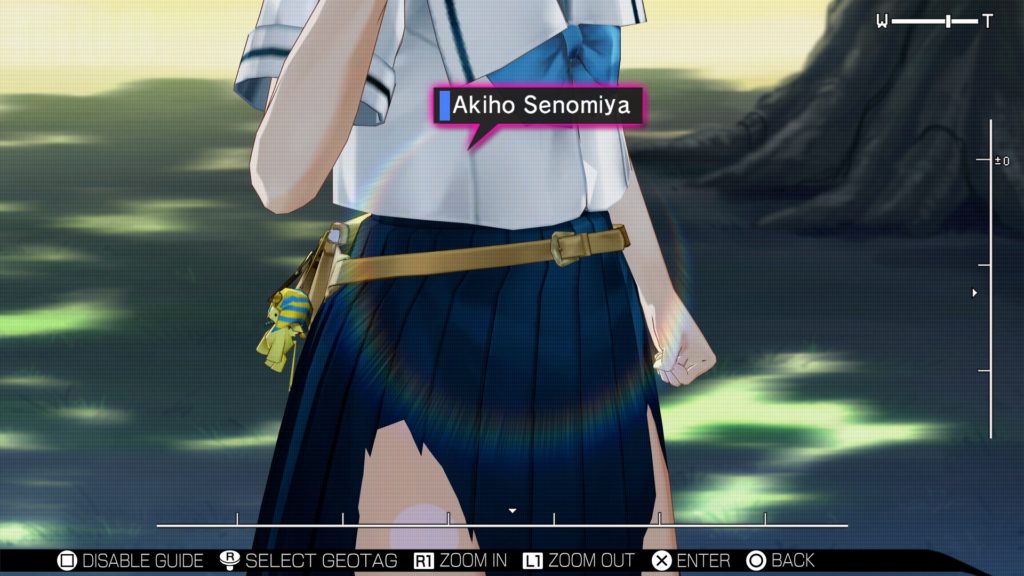
Additionally, certain assets in the menus and UI appear to be in a lower resolution and are visibly upscaled. The cause of this is probably the same as the low-resolution backgrounds mentioned earlier—they’re assets from the PlayStation Vita version of the game. Speaking of which, certain elements of the UI, such as menus and the apps on the PhoneDroid, are scaled up to be considerably larger than they were in the original 2012 release of Robotics;Notes. This is presumably because when developing Elite, the UI was resized with the screen of the PlayStation Vita in mind. Twipo in particular feels quite overblown playing in full screen on a PC monitor. Naturally, these issues are harder to notice on the Switch version in handheld mode due to the smaller screen, but they’re still present in docked mode.
Should you play this game if you’ve watched the anime?
Many of you may have already watched the anime adaptation, and you might be wondering if the game is worth playing if you already know the story from the anime. While the anime adaptation is certainly decent, the game offers better explanations of many events and technical terms throughout the story. This is true especially towards the end of the game, which includes a few important moments and explanations that the anime adaptation skipped. Another big point in the visual novel’s favor is that you get a lot of Kaito’s and Akiho’s inner monologues, which enhances many scenes and helps get you invested in the characters. Inner monologues are obviously a bit harder to convey in an anime adaptation, since they take a third-person perspective rather than a first-person perspective.
You also get to know Tanegashima much more in the game than in the anime. You get the chance to visit and scan many interesting locations that were not shown in the anime, likely due to time constraints or other issues.
Even though we still remembered important story moments from the anime, playing the game added so much more depth to the characters, locations, and events that it felt like a completely new experience.
Even if you’ve already watched the anime, this visual novel is one of a kind, and it’s very much worth experiencing.
8/10
Solely from a story perspective, Robotics;Notes Elite is nearly flawless, but it suffers from a poor structure and a number of technical and localization issues that dampen the experience. Regardless, its entertaining story, great characters, strong world-building, and varied gameplay make it an excellent third entry in the Science Adventure series.
